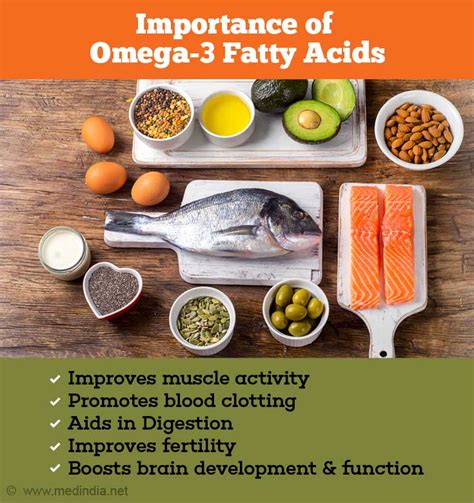omega-3 role in cell replication | omega 3 and cellular aging omega-3 role in cell replication An increased cell and tissue omega-3 fatty acid content alters cell functioning through a number of mechanisms. One of these mechanisms is related to changes caused by the incorporation of omega-3 fatty acids into cell membranes. NIJ tested Level IV Armor will defeat 3 rifle round shots up to .30 Cal M2 AP @ 2887 ft/s @ 42 feet; 10×12 multi curved- set of 2 plates; Vest fits in all Green2 Vests; For front and/or back protection; Alumina; Covering: 600D nylon .
0 · omega 3 supplements
1 · omega 3 stress reactivity
2 · omega 3 fatty acids
3 · omega 3 effects on telomeres
4 · omega 3 and cellular stress
5 · omega 3 and cellular aging
Current Update: Full character sheets, with each level updated with the most recent data, are regularly available for each campaign at the following pages. The pages present the most recent roster listing, so beware of spoilers! Campaign 1; By individual, C1 Level Updates. C ampaign 2; By individual, C2 Level Updates. Campaign 3; By .
An increased cell and tissue omega-3 fatty acid content alters cell functioning through a number of mechanisms. One of these mechanisms is related to changes caused by the incorporation of omega-3 fatty acids into cell membranes.First, as a constitutive part of the cellular membrane, omega-3 fatty acids can regulate cellular membrane properties, such as membrane fluidity or complex assembly in lipid rafts. In recent .
Higher levels of omega-3 track with longer telomeres, lower inflammation, and blunted sympathetic and cardiovascular stress reactivity. Whether omega-3 supplementation .
burberry rainbow cloak
First, as a constitutive part of the cellular membrane, omega-3 fatty acids can regulate cellular membrane properties, such as membrane fluidity or complex assembly in lipid . Omega-3, EPA and DHA inhibit the activities of prostanoids of the 2- series (PGI2, PGE2 and TXA2) presence in cell membrane-derived from Arachidonic Acid (ARA) lipid . In recent years, however, a new role for omega-3 fatty acids and their derivatives as signaling molecules has emerged. In this review, we describe the latest findings describing the effects of omega-3 fatty acids on different .A 2020 meta-analysis indicates that while omega-3 fatty acids have anti-inflammatory properties that could aid COVID-19 recovery, EPA and DHA might make cell membranes more prone to .
Omega 3 fatty acids increase the chemo-sensitivity of B-CLL-derived cell lines EHEB and MEC-2 and of B-PLL-derived cell line JVM-2 to anti-cancer drugs doxorubicin, vincristine and .
omega 3 supplements
Omega-3 fatty acids, namely docosahexaenoic acid and eicosapentaenoic acid, have been linked to several beneficial health effects (i.e. mitigation effects of hypertension, . Studies on the distribution pattern of Omega-3 genes in the biosphere have provided other important clues about the role of these fatty acids in cellular adaptation to the .

An increased cell and tissue omega-3 fatty acid content alters cell functioning through a number of mechanisms. One of these mechanisms is related to changes caused by the incorporation of omega-3 fatty acids into cell membranes.First, as a constitutive part of the cellular membrane, omega-3 fatty acids can regulate cellular membrane properties, such as membrane fluidity or complex assembly in lipid rafts. In recent years, however, a new role for omega-3 fatty acids and .
Higher levels of omega-3 track with longer telomeres, lower inflammation, and blunted sympathetic and cardiovascular stress reactivity. Whether omega-3 supplementation alters the stress .
First, as a constitutive part of the cellular membrane, omega-3 fatty acids can regulate cellular membrane properties, such as membrane fluidity or complex assembly in lipid rafts. In recent years, however, a new role for omega-3 fatty acids and their derivatives as signaling molecules has emerged. Omega-3, EPA and DHA inhibit the activities of prostanoids of the 2- series (PGI2, PGE2 and TXA2) presence in cell membrane-derived from Arachidonic Acid (ARA) lipid peroxidation and trigger several proteins activated mitogenic cell signaling pathways.
In recent years, however, a new role for omega-3 fatty acids and their derivatives as signaling molecules has emerged. In this review, we describe the latest findings describing the effects of omega-3 fatty acids on different cells from the immune system and their possible molecular mechanisms.
A 2020 meta-analysis indicates that while omega-3 fatty acids have anti-inflammatory properties that could aid COVID-19 recovery, EPA and DHA might make cell membranes more prone to oxidation, increasing oxidative stress.Omega 3 fatty acids increase the chemo-sensitivity of B-CLL-derived cell lines EHEB and MEC-2 and of B-PLL-derived cell line JVM-2 to anti-cancer drugs doxorubicin, vincristine and fludarabine. Lipids Heal Dis. 2013; 12 :36. Omega-3 fatty acids, namely docosahexaenoic acid and eicosapentaenoic acid, have been linked to several beneficial health effects (i.e. mitigation effects of hypertension, stroke, diabetes, osteoporosis, depression, schizophrenia, .
Studies on the distribution pattern of Omega-3 genes in the biosphere have provided other important clues about the role of these fatty acids in cellular adaptation to the marine world. Several key ecological parameters are summarized as follows: An increased cell and tissue omega-3 fatty acid content alters cell functioning through a number of mechanisms. One of these mechanisms is related to changes caused by the incorporation of omega-3 fatty acids into cell membranes.
burberry ray ban
First, as a constitutive part of the cellular membrane, omega-3 fatty acids can regulate cellular membrane properties, such as membrane fluidity or complex assembly in lipid rafts. In recent years, however, a new role for omega-3 fatty acids and . Higher levels of omega-3 track with longer telomeres, lower inflammation, and blunted sympathetic and cardiovascular stress reactivity. Whether omega-3 supplementation alters the stress . First, as a constitutive part of the cellular membrane, omega-3 fatty acids can regulate cellular membrane properties, such as membrane fluidity or complex assembly in lipid rafts. In recent years, however, a new role for omega-3 fatty acids and their derivatives as signaling molecules has emerged. Omega-3, EPA and DHA inhibit the activities of prostanoids of the 2- series (PGI2, PGE2 and TXA2) presence in cell membrane-derived from Arachidonic Acid (ARA) lipid peroxidation and trigger several proteins activated mitogenic cell signaling pathways.

In recent years, however, a new role for omega-3 fatty acids and their derivatives as signaling molecules has emerged. In this review, we describe the latest findings describing the effects of omega-3 fatty acids on different cells from the immune system and their possible molecular mechanisms.A 2020 meta-analysis indicates that while omega-3 fatty acids have anti-inflammatory properties that could aid COVID-19 recovery, EPA and DHA might make cell membranes more prone to oxidation, increasing oxidative stress.
omega 3 stress reactivity
omega 3 fatty acids
Omega 3 fatty acids increase the chemo-sensitivity of B-CLL-derived cell lines EHEB and MEC-2 and of B-PLL-derived cell line JVM-2 to anti-cancer drugs doxorubicin, vincristine and fludarabine. Lipids Heal Dis. 2013; 12 :36. Omega-3 fatty acids, namely docosahexaenoic acid and eicosapentaenoic acid, have been linked to several beneficial health effects (i.e. mitigation effects of hypertension, stroke, diabetes, osteoporosis, depression, schizophrenia, .

burberry quilted jacket clearance
omega 3 effects on telomeres
Product Description. Welcome to Los Santos where self-help gurus, starlets, and fading celebrities, once the envy of the Western world, are now struggling to stay afloat. In Grand Theft Auto V, you follow the epic storylines of A young street hustler, a retired bank robber and a terrifying psychopath.
omega-3 role in cell replication|omega 3 and cellular aging
























